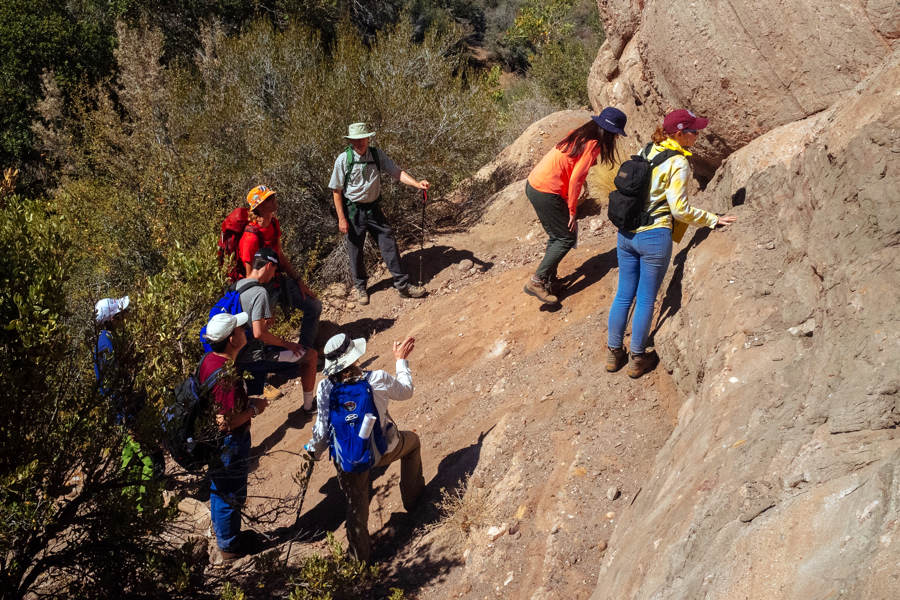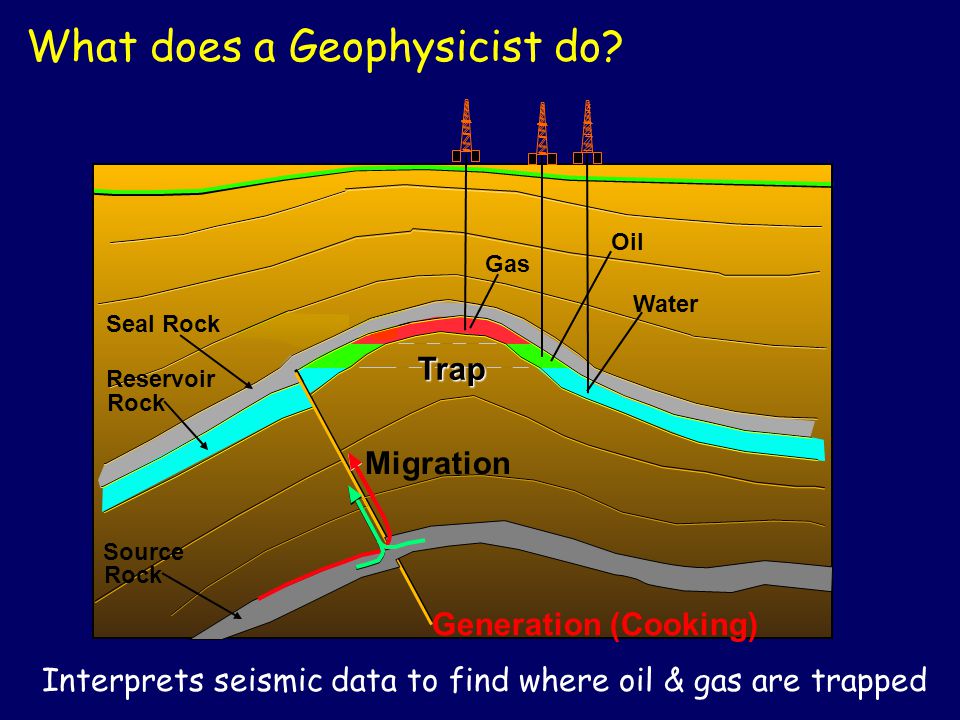All Categories
Featured
Table of Contents
- – How To Become A Geophysicist in Port Kennedy ...
- – How To Become A Geophysicist in Guildford Au...
- – Geophysicists in Marmion Australia 2021
- – Geophysical And Geotechnical Assessment in ...
- – Geophysical Surveys in Beechboro WA 2020
- – Your Degree In Geophysics in Bibra Lake Au...
- – Geophysicist Salary in Wexcombe Oz 2021
- – Archaeological Geophysics And Geochemistry...
- – Integrated Geophysical Surveys For The Saf...
- – Geophysical Surveys: Definition & Methods ...
How To Become A Geophysicist in Port Kennedy Australia 2023
What is the job description of a Geophysicist? What are the duties and responsibilities of a Geophysicist? What does a Geophysicist do? A geophysicist studies physical aspects of the earth and utilizes complex devices to collect information on earthquakes and seismic waves, which move through and around the earth. The best industries for geophysicists are the mining and oil markets, as they play a substantial part in the acquisition of natural deposits.
This Geophysicist job description example consists of the list of most important Geophysicist tasks and obligations as shown below. It can be customized to fit the particular Geophysicist profile you're trying to fill as a recruiter or task seeker.
Career opportunities vary commonly across a variety of fields consisting of geophysical data, climate modelling, engineering geology, hydrology, mining, ecological consulting, natural resources exploration, agriculture, and others. There are lots of career paths that can integrate your academic backgrounds, skills, and experience with your various interests. Go through the job titles below for ideas.
How To Become A Geophysicist in Guildford Aus 2020
Check out the National Occupational Category website to research study standard requirements and duties of jobs in your field.
Geophysics plays in essential role in numerous elements of civil engineering, petroleum engineering, mechanical engineering, and mining engineering, along with mathematics, physics, geology, chemistry, hydrology, and computer science. For that reason, students in other majors might think about a small in geophysical engineering. The core courses needed for a minor are: GPGN229, Mathematical Geophysics (3.
0 credits) GPGN329, Physics of the Earth II (3. 0 credits) GPGN314, Applied Geophysics (4. 0 credits) Students may please the staying 5 hours with a combination of other geophysics courses, in addition to courses in geology, mathematics, or computer system science, depending upon the trainee's significant. Students need to speak with the Department of Geophysics to establish an authorized series of courses for the minor.
Geophysicists in Marmion Australia 2021

The income level of geophysicists can vary depending upon elements such as their level of education, their level of experience, where they work, and many others. According to the 2018 Alberta Wage and Wage Survey, Albertans working in the occupational group earn an average income of each year. According to Work, BC (the Province of British Columbia), the yearly provincial typical income of B.C.

Geophysicists can work both inside your home, in a workplace or laboratory environment, or outdoors while carrying out fieldwork. Fieldwork can involve being exposed to a variety of weather conditions, and possibly harmful situations, depending on their area of specialization of the geophysicist. Some geophysicists may also spend long periods of time operating in small teams in remote places.
When carrying out fieldwork, the working hours of geophysicists can be long and include nights, weekends and vacations. To become a competent geophysicist, you require to posses a specific set of abilities and characteristic. These skills and qualities will permit you to efficiently carry out the duties of your job, as well as keep a favorable mindset towards your work.
Geophysical And Geotechnical Assessment in Hovea WA 2022
Institution of higher learnings Federal, provincial/state government departments Oil, gas and mining companies Non-profit organizations Geological and geophysical consulting companies Public and private research study companies Our job board below has "Geophysicist" postings in Canada, the United States, the UK and Australia, when readily available:.
Our information suggests that the greatest spend for a Geophysicist is $165k/ year Our data suggests that the least expensive spend for a Geophysicist is $55k/ year Increasing your pay as a Geophysicist is possible in different methods. Change of company: Think about a career transfer to a brand-new company that wants to pay greater for your abilities.
Handling Experience: If you are a Geophysicist that supervises more junior Geophysicists, this experience can increase the possibility to earn more.
Geophysical Surveys in Beechboro WA 2020
Physics of the Earth and its vicinity Age of the sea flooring. Much of the dating info comes from magnetic abnormalities.
The term geophysics classically refers to solid earth applications: Earth's shape; its gravitational, electromagnetic fields, and electromagnetic fields; its internal structure and structure; its characteristics and their surface expression in plate tectonics, the generation of magmas, volcanism and rock formation. Modern-day geophysics organizations and pure scientists utilize a more comprehensive definition that consists of the water cycle including snow and ice; fluid dynamics of the oceans and the atmosphere; electrical power and magnetism in the ionosphere and magnetosphere and solar-terrestrial physics; and comparable problems related to the Moon and other worlds. Geophysics is used to societal requirements, such as mineral resources, mitigation of natural threats and ecological defense. In expedition geophysics, geophysical study information are used to analyze prospective petroleum tanks and mineral deposits, locate groundwater, discover archaeological relics, figure out the density of glaciers and soils, and evaluate websites for environmental removal. To supply a clearer idea of what constitutes geophysics, this section explains phenomena that are studied in physics and how they connect to the Earth and its environments. Geophysicists likewise examine the physical processes and properties of the Earth, its fluid layers, and magnetic field in addition to the near-Earth environment in the Planetary system, which includes other planetary bodies.
The gravitational pull of the Moon and Sun generates 2 high tides and two low tides every lunar day, or every 24 hours and 50 minutes. There is a gap of 12 hours and 25 minutes between every high tide and between every low tide. Gravitational forces make rocks push down on much deeper rocks, increasing their density as the depth boosts.
Your Degree In Geophysics in Bibra Lake Aus 2022
The geoid would be the global mean sea level if the oceans were in equilibrium and might be extended through the continents (such as with very narrow canals).
The main sources of heat are the primordial heat and radioactivity, although there are also contributions from phase transitions. Heat is mostly reached the surface by thermal convection, although there are 2 thermal border layers the coremantle limit and the lithosphere in which heat is transported by conduction. Some heat is carried up from the bottom of the mantle by mantle plumes. If the waves originate from a localized source such as an earthquake or explosion, measurements at more than one area can be used to locate the source. The places of earthquakes provide info on plate tectonics and mantle convection. Recording of seismic waves from controlled sources supplies details on the area that the waves travel through.
Understanding their systems, which depend on the type of earthquake (e. g., intraplate or deep focus), can result in much better estimates of earthquake risk and improvements in earthquake engineering. Although we mainly discover electrical power throughout thunderstorms, there is constantly a down electric field near the surface that averages 120 volts per meter. A range of electrical techniques are used in geophysical study., a potential that develops in the ground since of man-made or natural disruptions.
Geophysicist Salary in Wexcombe Oz 2021
In the highly conductive liquid iron of the external core, magnetic fields are created by electrical currents through electro-magnetic induction.
In the core, they most likely have little observable impact on the Earth's electromagnetic field, however slower waves such as magnetic Rossby waves might be one source of geomagnetic nonreligious variation. Electro-magnetic techniques that are utilized for geophysical survey include short-term electromagnetics, magnetotellurics, surface area nuclear magnetic resonance and electromagnetic seabed logging. These geomagnetic reversals, evaluated within a Geomagnetic Polarity Time Scale, consist of 184 polarity intervals in the last 83 million years, with modification in frequency over time, with the most recent short complete turnaround of the Laschamp event occurring 41,000 years back during the last glacial duration. Geologists observed geomagnetic reversal recorded in volcanic rocks, through magnetostratigraphy correlation (see natural remanent magnetization) and their signature can be viewed as parallel linear magnetic abnormality stripes on the seafloor. They are the basis of magnetostratigraphy, which associates magnetic turnarounds with other stratigraphies to construct geologic time scales. In addition, the magnetization in rocks can be utilized to determine the motion of continents. Radioactive decay accounts for about 80% of the Earth's internal heat, powering the geodynamo and plate tectonics.
Archaeological Geophysics And Geochemistry Planning A Geophysical Survey: Environmental & Physical ... in Highgate Oz 2023
Radioactive elements are utilized for radiometric dating, the primary method for developing an absolute time scale in geochronology. Unsteady isotopes decay at predictable rates, and the decay rates of different isotopes cover several orders of magnitude, so radioactive decay can be used to accurately date both current events and events in previous geologic ages.
Fluid movements take place in the magnetosphere, atmosphere, ocean, mantle and core. Even the mantle, though it has an enormous viscosity, streams like a fluid over long time intervals. This flow is reflected in phenomena such as isostasy, post-glacial rebound and mantle plumes. The mantle circulation drives plate tectonics and the flow in the Earth's core drives the geodynamo.
Water is a very complicated substance and its special homes are important for life.
Integrated Geophysical Surveys For The Safety in Westfield Aus 2021
The Earth is roughly round, but it bulges towards the Equator, so it is roughly in the shape of an ellipsoid (see Earth ellipsoid). This bulge is due to its rotation and is nearly constant with an Earth in hydrostatic stability. The in-depth shape of the Earth, nevertheless, is likewise affected by the distribution of continents and ocean basins, and to some extent by the dynamics of the plates.
(5. 515) is far greater than the normal specific gravity of rocks at the surface (2.
33 M R2, compared to 0. 4 M R2 for a sphere of consistent density). Some of the density boost is compression under the enormous pressures inside the Earth.
Geophysical Surveys: Definition & Methods in Medina Australia 2023
The conclusion is that pressure alone can not account for the increase in density. Rather, we understand that the Earth's core is composed of an alloy of iron and other minerals. Reconstructions of seismic waves in the deep interior of the Earth show that there are no S-waves in the outer core.
, nevertheless, is strong because of the huge pressure.
Table of Contents
- – How To Become A Geophysicist in Port Kennedy ...
- – How To Become A Geophysicist in Guildford Au...
- – Geophysicists in Marmion Australia 2021
- – Geophysical And Geotechnical Assessment in ...
- – Geophysical Surveys in Beechboro WA 2020
- – Your Degree In Geophysics in Bibra Lake Au...
- – Geophysicist Salary in Wexcombe Oz 2021
- – Archaeological Geophysics And Geochemistry...
- – Integrated Geophysical Surveys For The Saf...
- – Geophysical Surveys: Definition & Methods ...
Latest Posts
Geophysical Survey - Mining Fundamentals in Mahogany Creek Aus 2023
How To Become A Geophysicist in South Fremantle Oz 2022
Field Geophysicist - Parsons Careers – Engineered Systems in Ballajura Aus 2021
More
Latest Posts
Geophysical Survey - Mining Fundamentals in Mahogany Creek Aus 2023
How To Become A Geophysicist in South Fremantle Oz 2022
Field Geophysicist - Parsons Careers – Engineered Systems in Ballajura Aus 2021